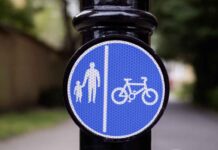Pedestrian safety is a growing concern in San Diego, where recent statistics reveal an alarming increase in accidents. With over 1,200 incidents reported annually, understanding the causes and solutions is crucial. This post explores the factors contributing to pedestrian accidents in San Diego and the measures being taken to improve pedestrian safety.
The Rising Incidence Of San Diego Pedestrian Accidents
San Diego, known for its beautiful weather and vibrant neighborhoods, has unfortunately seen a significant rise in pedestrian accidents in recent years. According to recent data, pedestrian fatalities have increased despite efforts to improve road safety infrastructure. This increase can be attributed to several factors, including the city’s growing population and the subsequent rise in vehicle traffic. As more people occupy urban spaces, the interaction between pedestrians and vehicles becomes more frequent, raising the risk of accidents. Additionally, the city’s sprawling nature, with its mix of high-density urban areas and suburban zones, often complicates pedestrian navigation and safety.
Key Factors Contributing To Pedestrian Accidents
Several factors contribute to the high rate of pedestrian accidents in San Diego. Distracted driving remains one of the primary causes, as drivers using mobile phones or other devices can easily miss pedestrians crossing the road. Speeding is another significant issue; drivers exceeding speed limits have less time to react to unexpected pedestrian crossings. Moreover, some areas’ inadequate crosswalks and pedestrian signals leave walkers vulnerable, particularly at night or during inclement weather. The city’s infrastructure, in some cases, has not kept pace with its growing population, leading to dangerous intersections and poorly marked pedestrian zones. All these factors create a precarious environment for pedestrians, necessitating urgent attention and intervention.
Local Initiatives And Safety Measures
San Diego has implemented several initiatives to enhance safety in response to the rising number of pedestrian accidents. The city has invested in infrastructure improvements, focusing on redesigning dangerous intersections and installing better pedestrian signage and signals. These efforts are complemented by public awareness campaigns that educate drivers and pedestrians about road safety and the importance of vigilance. Programs like “Vision Zero” aim to eliminate all traffic fatalities, including pedestrian deaths, through a combination of policy, enforcement, and community engagement. By fostering a culture of safety and mutual respect on the roads, these initiatives strive to reduce pedestrian accidents significantly.
The Role Of Technology In Enhancing Pedestrian Safety
Technology plays a pivotal role in improving pedestrian safety in San Diego. Advanced driver-assistance systems (ADAS) in vehicles, such as automatic emergency braking and pedestrian detection, help prevent collisions by alerting drivers to potential hazards. Moreover, smart city technologies, including adaptive traffic signals and real-time data collection, enable more efficient traffic management and safer pedestrian crossings. These technological advancements, alongside traditional safety measures, offer a comprehensive approach to reducing the risk of accidents. As these technologies become more widespread, they potentially transform urban mobility and significantly enhance pedestrian safety.
Community Involvement And Advocacy Efforts
Community involvement and advocacy are critical in addressing pedestrian safety in San Diego. Local organizations and advocacy groups have been instrumental in raising awareness and pushing for changes that prioritize pedestrian welfare. Groups such as Circulate San Diego actively engage with city officials and residents to highlight the dangers pedestrians face daily and propose actionable solutions. These organizations often organize events, workshops, and campaigns to educate the public about safe walking practices and the importance of pedestrian-friendly policies.
Moreover, community advocacy has been essential in influencing local government decisions regarding infrastructure improvements and traffic enforcement. By voicing concerns and demonstrating the need for change, these groups have successfully lobbied for installing more crosswalks, improved lighting in high-risk areas, and stricter traffic law enforcement. This grassroots approach ensures that residents’ voices directly affected by pedestrian safety issues are heard and considered in policy-making processes.
In addition to organized groups, individual residents also contribute to enhancing pedestrian safety by participating in city council meetings, providing feedback on proposed infrastructure projects, and volunteering in community safety initiatives. Their involvement helps identify problem areas and fosters a sense of shared responsibility for creating a safer urban environment.
Conclusion
Pedestrian safety in San Diego remains a pressing issue, with over 1,200 accidents reported yearly. Addressing this challenge requires a multifaceted approach, combining infrastructure improvements, public awareness, and technological advancements. By prioritizing pedestrian safety, San Diego can ensure a safer environment for all its residents and visitors, fostering a more pedestrian-friendly city.







